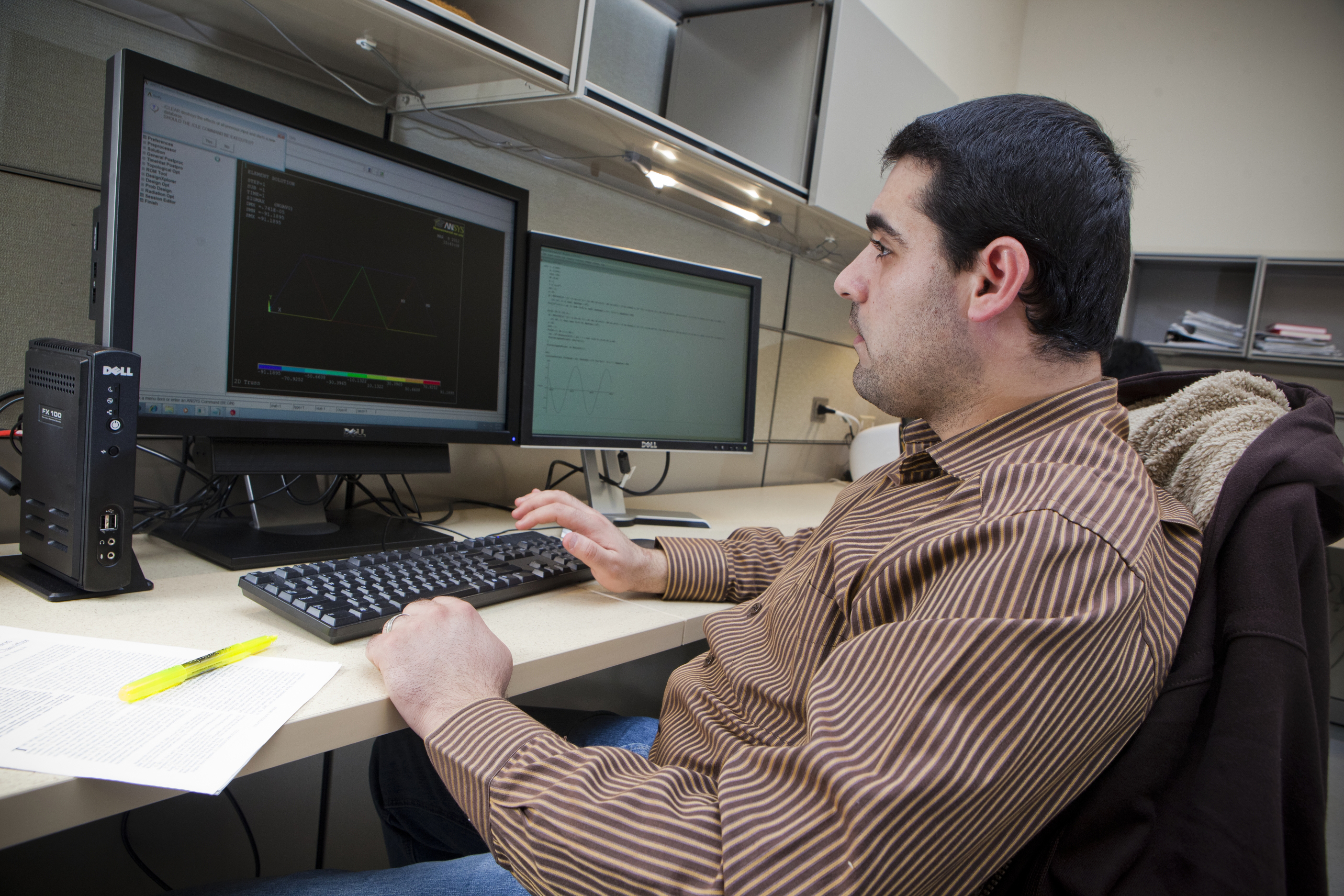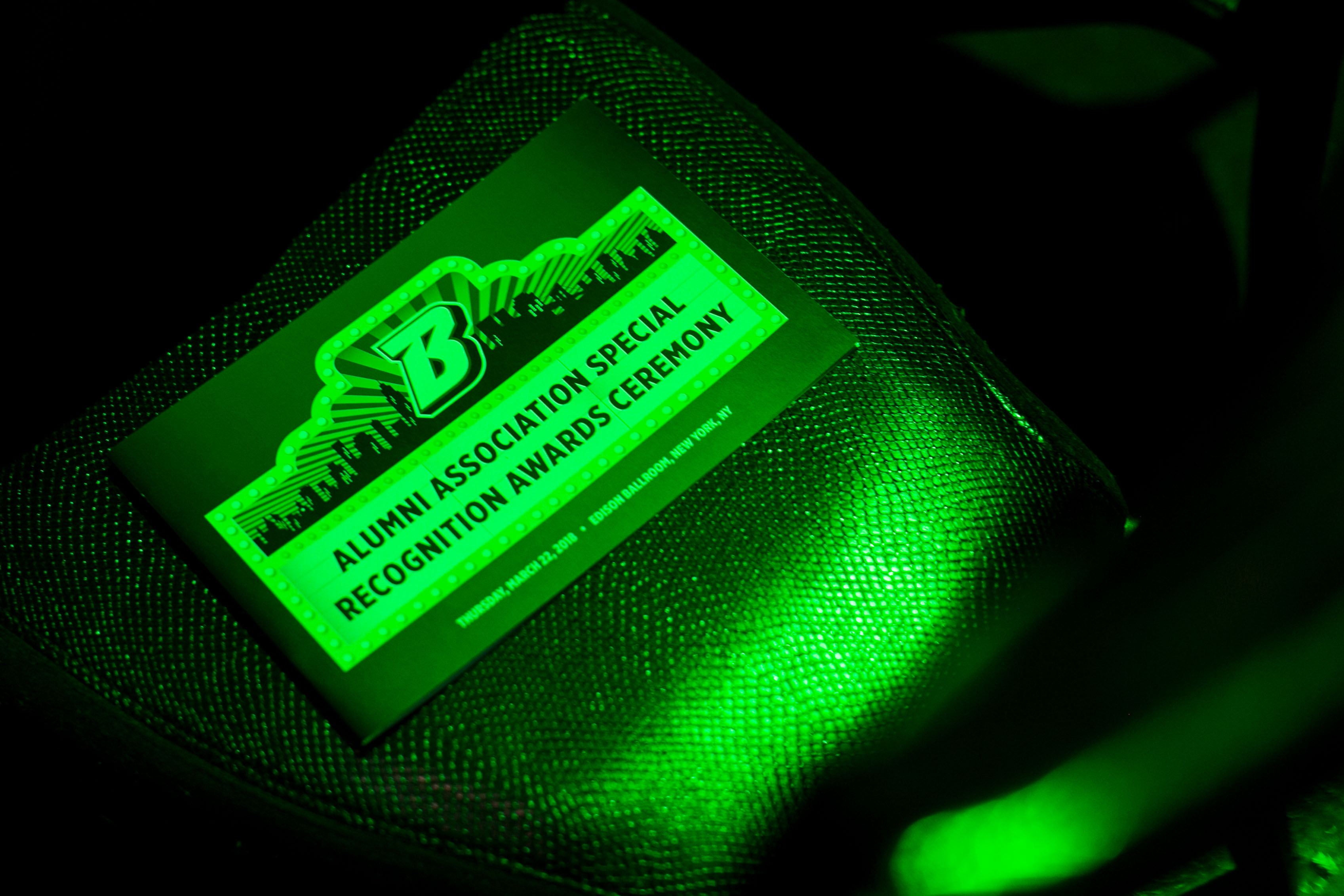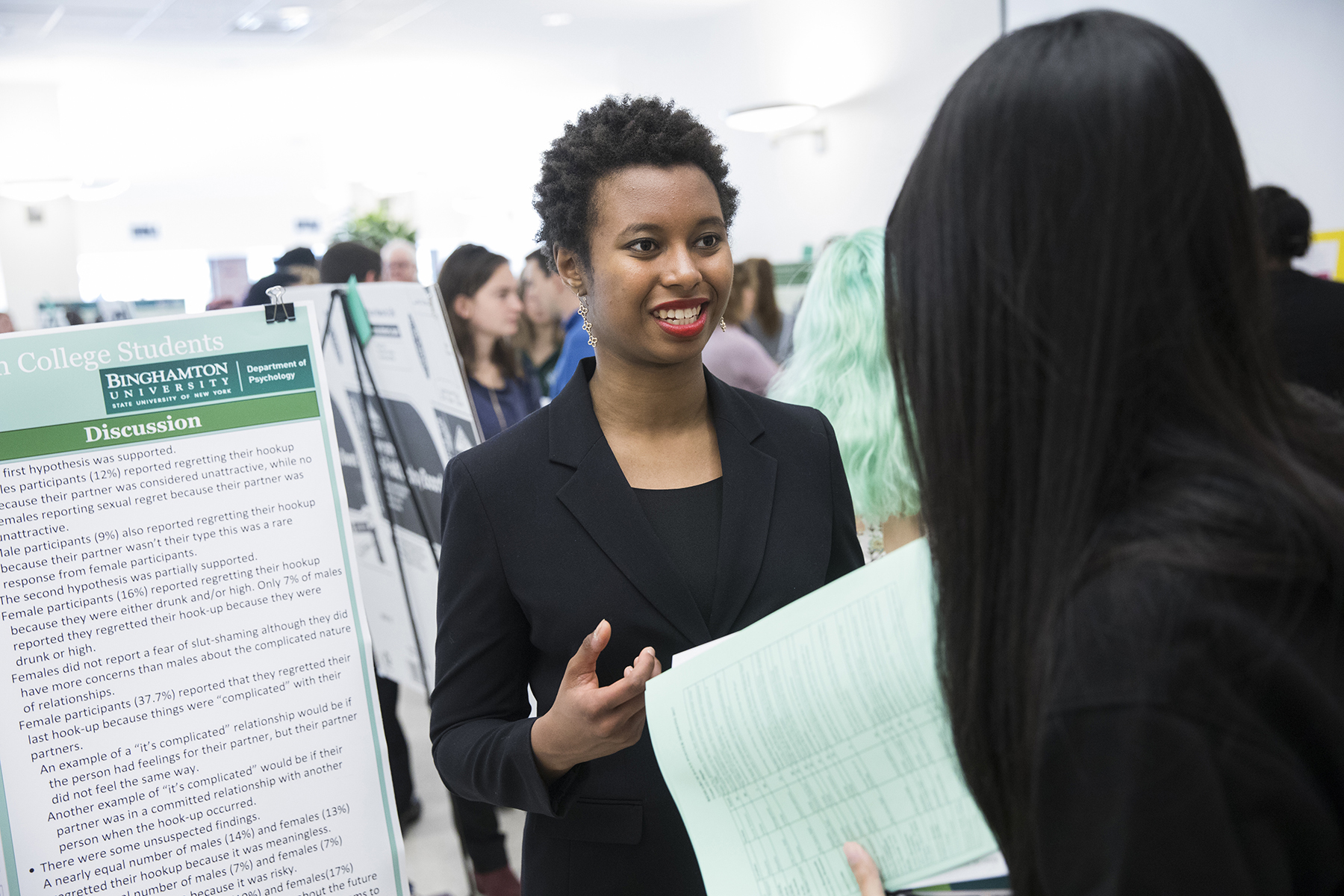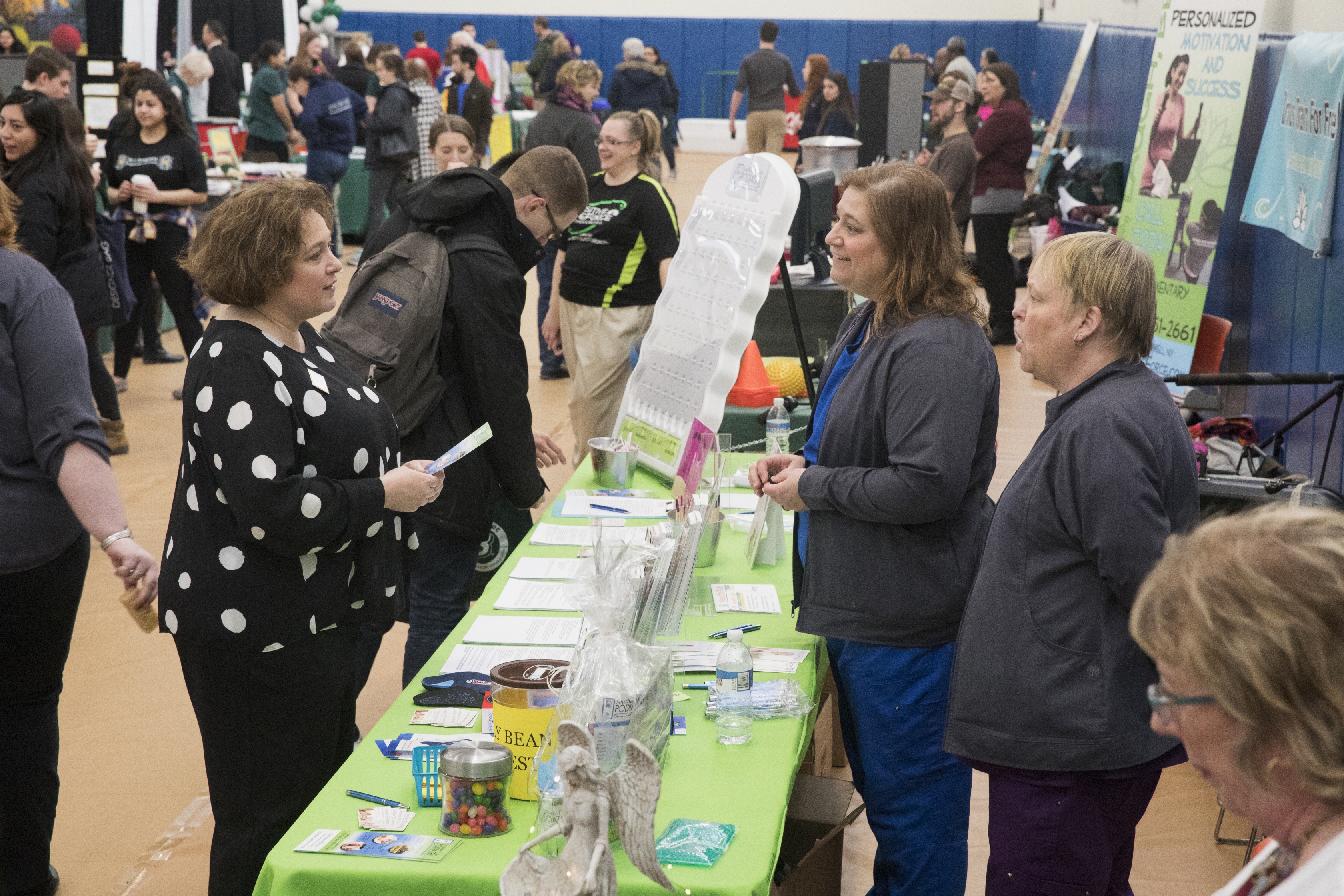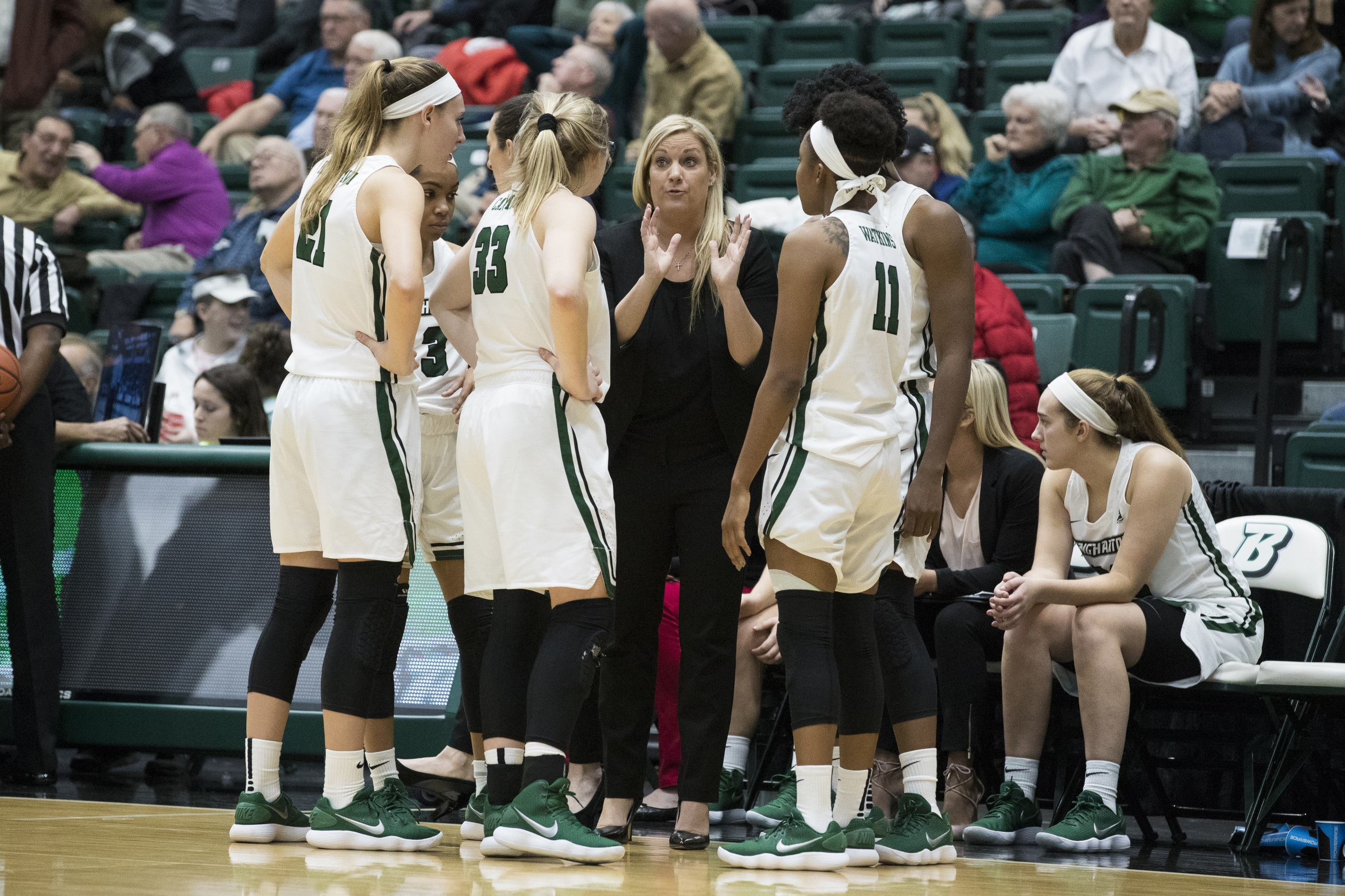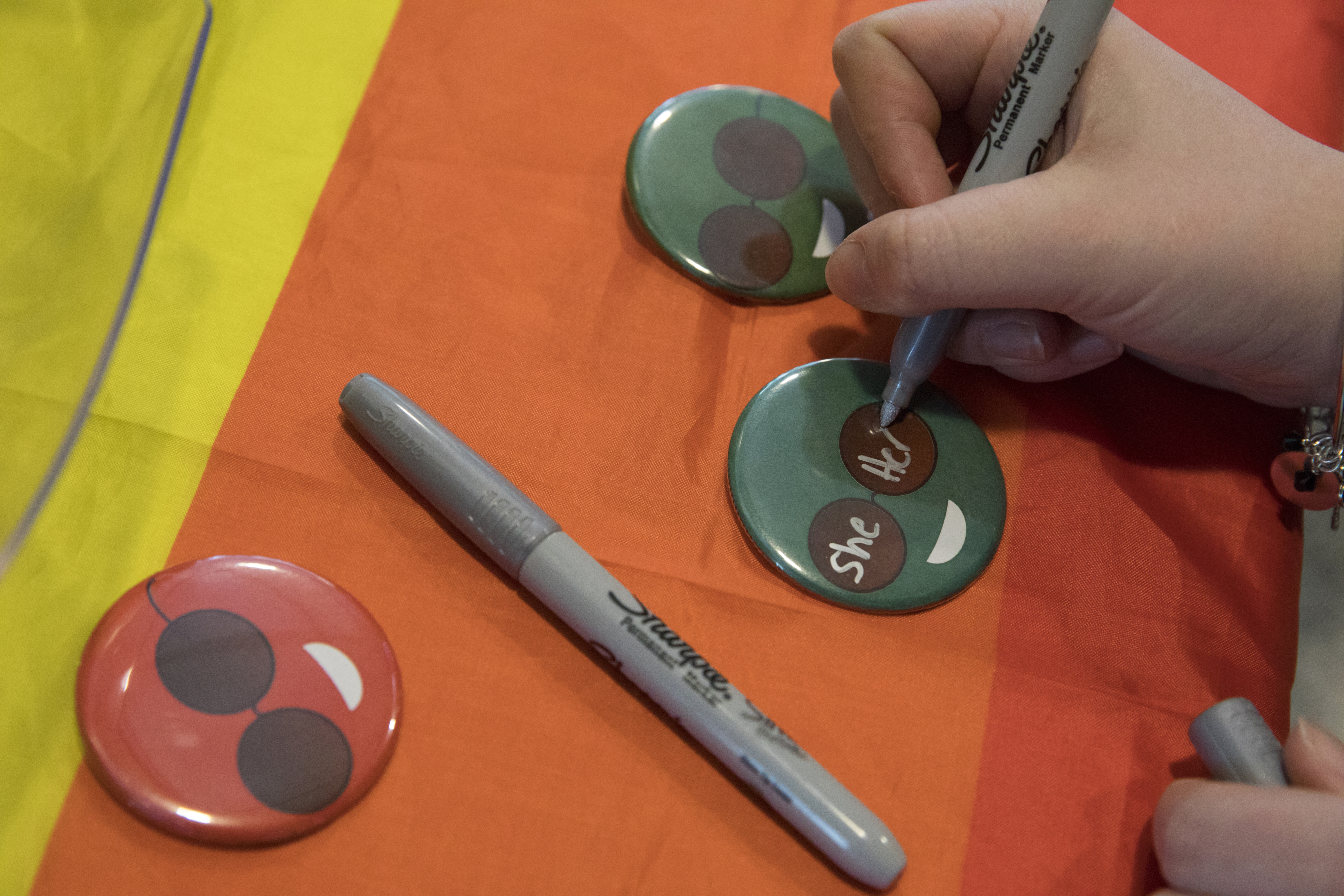Binghamton University President Harvey Stenger's Road Map Quarterly Report - March 21, 2018
Binghamton University, with its nearly 17,500 students and some 5,000 faculty and staff members, is much like a small city. The campus not only has its classrooms and laboratories, but also its restaurants and bookstores, visitors and tourists, buildings to maintain and potholes to fill.
I was reminded of this as I was coming onto campus the other day and saw crews from our Physical Facilities Department working to repair damage caused by this year’s long winter, a winter that saw several sizable snowstorms.
Class cancellations and losses
These storms caused us to cancel classes on three different occasions – Feb. 7, and March 2 and 8. Ordinarily campus closures are the result of large storms blanketing the campus, but the closure on March 8 was unique — a large Nor’easter that barely grazed the Southern Tier hit the Metro and Downstate New York regions particularly hard. Because the storm happened as students were preparing to return to campus following their midwinter break, we decided that we would delay the opening of classes for an additional day in the interest of student safety. Faculty were encouraged to be flexible regarding making up assignments and tests.
The decision to delay or cancel classes due to weather is one that requires careful consideration, as closing the campus results in lost productivity and class time. At the same time, we are deeply concerned about the well-being of our students, faculty and staff. Every large storm results in a series of conversations with members of my emergency management team, often long before dawn, regarding weather forecasts, road conditions and other public safety concerns.
Despite our size, Binghamton remains a close community, and we are all shaken when we learn that one of our own has been hurt. Sadly, Binghamton has had to endure the loss of two students this past quarter.
Shortly after the semester began in January, we were informed of the death of one of our students, Harpur sophomore Aaron “AJ” Dannenbring, near his home in Westchester County. And then, only a few weeks later, the campus was shocked to learn that one of our senior nursing students, Haley Anderson, died in a homicide and that the suspect was another of our nursing students, who fled the country. With assistance from local and federal police and political leaders, the Broome County District Attorney is working to secure the student’s return for trial.
Both AJ and Haley were described by their peers as talented, active students, and they are mourned by the entire campus. Because our learning communities bring students together and students develop close relationships during their years of coursework, we understand the profound impact that deaths such as these can have on their friends and colleagues. For this reason, Decker School of Nursing Dean Mario Ortiz recommended canceling some nursing school classes for the school on the day following Haley’s death, and in both cases, faculty and administrators worked with AJ’s and Haley’s classmates to provide counseling and other support services.
Of course, we also have reached out to their parents and families to assist them in any way we can. Although I understand that no words that I or any other person on campus can offer will reduce their grief, it is still vital that the campus support them however possible in their time of need.
We also learned in March of the passing of a long-time friend and supporter of the University, Marilyn C. Link. Marilyn’s brother was the famed inventor and entrepreneur Edwin Link, who led the development of the simulator industry that was for many decades a major regional employer. Marilyn worked closely with him but was never in his shadow. In the decades between the 1930s and 1970s, Marilyn had a broad and adventurous career. She was a pilot, educator, engineer, entrepreneur, business leader and philanthropist, and even turned down the opportunity to become one of the nation’s first female astronauts. She made her mark as the managing director of the renowned Harbor Branch Oceanographic Institute – all this at a time when women’s roles were too often circumscribed by society’s expectations of women.
The Link family, and Marilyn especially, were great supporters of Binghamton University. Her father established the Link Piano and Organ Company in Binghamton, and it was through him that she developed a lifelong love for music. She shared this love with the campus in her first gift, providing the music department with a rare Link organ and establishing an endowment to support music faculty and graduate students. Later, she provided support for graduate students in the Creative Writing Program and established a scholarship for women in our School of Management’s finance program. In 2000, through a generous grant from the Link Foundation, the campus established the Edwin A. Link Engineering Design Laboratory in the Thomas J. Watson School of Engineering and Applied Science. All told, the University has spent more than $2.5 million in Link supported endowments and scholarships, with an additional $3.5 million under campus management to support future activities. In addition, our campus is the repository of the Edwin A. Link and Marion Clayton Link Collections, a virtually priceless collection of the papers, photos and journals of the Link family and local history. Throughout, Marilyn built relationships with four University presidents and countless faculty and staff.
Flu outbreak
The semester began under a statewide public health emergency, with the worst flu outbreak in several decades. Student visits to the Decker Student Health Services Center were up significantly and the student-run ambulance service, Harpur’s Ferry, transported more than a dozen students to hospital emergency rooms during January alone.
In an effort to reduce the incidence of flu on campus, the Decker Student Health Services Center offered free flu vaccinations to students, provided through a grant from United Healthcare Insurance. More than 1,100 students received it, but unfortunately, the vaccine proved only partially successful this year. Decker also distributed more than 300 free “cold and flu packs” containing over-the-counter pain relievers, tea, soup, vitamins, cough drops, disposable thermometers, surgical masks and other “cold-related” items. Here again, we’ve encouraged faculty to be flexible regarding attendance and grading, while the Center for Learning and Teaching worked with faculty to provide backup lecture and class materials.
Research
Our faculty have been very busy with their research and scholarship and have been getting great visibility for the University in the popular and scientific press lately.
For example, anthropology associate professor Rolf Quam has been featured for his role in helping discover the world’s oldest human skull outside of Africa, in a cave in Israel. This skull, believed to be 175,000 years old, moves back the time of modern human migration from Africa by 50,000 years, to a point somewhere around 220,000 years ago. In addition, mechanical engineering assistant professor Congrui Jin has found that adding fungi spores to concrete can help concrete “self-heal” as it develops cracks and chips. She has discovered that, as cracks develop, the spores are exposed to air and precipitate calcium carbonate, which helps to heal the cracks. The idea of self-healing concrete would do wonders for our infrastructure. Both these stories were recently featured in a single episode of the BBC World Service Radio Program “Science in Action” — meaning that Binghamton University cornered the market, focusing on our faculty research for two out of the four segments on the show.
Just before Valentine’s Day, psychology professor Matthew Johnson received lots of press for a short piece he wrote for the academic research aggregator “The Conversation,” which was picked up by hundreds of other news services, including USA Today, CNN and Salon.com. Johnson’s article was a summary of psychological research that dispels the notion that opposites attract, showing instead that people are drawn to similar personalities when choosing a mate. Mass market stories such as this help bring Binghamton into people’s homes across the country and put our faculty on the radar for larger, more important recognition.
We saw this recently with materials science distinguished professor M. Stanley Whittingham, who was recognized two years ago as a Thompson-Reuters Laureate, putting him on the list of potential Nobel Prize winners. He was just named a member of the National Academy of Engineering for his pioneering work on lithium-ion batteries. It’s notable that more than 200 members of the National Academy are Noble laureates.
Academic activities
Our faculty are also deeply involved in hands-on research that is impacting our communities, both in the Southern Tier and across New York state. For example, our Decker School of Nursing, working with our Watson School, just opened the Southern Tier Telemedicine and Mobile Health Research Development and Training Center. This will allow for expanded simulation and clinical experiences for students and expose them to telemedicine and technologies that they may or may not have a chance to experience during their clinical rotations. The school is also working with hospitals in six surrounding rural communities — some more than 60 miles away from our campus in Vestal – to train their healthcare providers to help deliver high-quality care to underserved patients.
Earlier this month, state Sen. Fred Akshar (R) and the Joint Senate Task Force on Heroin and Opioid Addiction were on campus to host a public forum on opioid abuse, which has become a national crisis with a large impact in the Southern Tier. Many of the speakers were representatives from regional healthcare, nonprofit and rehabilitation centers or had dealt with substance use disorders themselves. We appreciate the role that our campus can play in working with community leaders to address hard challenges.
Toward that end, we are in the preliminary discussions to establish a Research Center for Opioid Use Disorder Treatment, Education and Community Harm in partnership with SUNY Upstate Medical University and community leaders. Taking a leadership role will be William Eggleston, clinical assistant professor of pharmacy; Kanad Ghose, professor of computer science; and Mark Poliks, professor of systems science and industrial engineering. Their goal will be to develop novel strategies to reduce the incidence of opioid use disorder, prevent opioid overdose deaths, manage opioid-related toxicities and provide treatment for patients.
Other faculty on campus are pursuing funding to support the development of a Lyme disease research center on campus that would focus on the epidemiology and ecology, diagnostics and public health impacts of the tick-borne disease.
We continue to develop new academic programs that address world-wide challenges, believing that our graduates will be positioned to help influence and direct public policy. Most recently, we have submitted a proposal to SUNY that would allow for the development of a new academic program in human rights. This new Master of Science program developed out of our new Human Rights Institute, co-directed by professors David Cingranelli of our Political Science Department and Alexandra Moore from our English Department. The program will focus on training advanced students for careers in human rights advocacy and research. If approved, it will complement the work of our interdisciplinary Institute for Genocide and Mass Atrocity Prevention (I-GMAP) that was established last year with the assistance of Owen Pell ’80. Together, these programs will help make Binghamton a leader in disciplines dealing with human rights.
Because of programs like these, Binghamton’s reputation continues to increase, and this is reflected in the rankings we receive in the popular press. For the second year in a row, the on-line publication Buffalo Business First has listed Binghamton University the 17th best public college in the nation, higher than any other public college in New York state. The authors cite Binghamton’s retention and graduation rates, selectivity and alumni earnings as the basis for our outstanding rank.
Admissions update
The period from January to March is when most high-school seniors make decisions about which college or university to attend in the fall, and Binghamton’s increased visibility and rankings have contributed to a surge in applications. In addition, the phasing in of the New York State Excelsior Scholarship Program that offers free tuition to families with an annual income this year of under $110,000 seems to be increasing interest in our campus.
This year, we received more than 38,000 applications — an increase of nearly 15 percent over last year. Because we will be keeping our undergraduate enrollment steady, this means that we will see an increase in the overall quality of our students.
We continue to see a drop in international enrollments, due in large part to the perception that the U.S. is less receptive than it has been; this is damaging to the campus both in terms of our international reputation and to our fiscal situation. Graduate recruitment remains a priority, but here, in particular, the challenge of recruiting international students is hurting us, with the number of international graduate applications down by over 25 percent. To offset this, we are working hard to get offers out early to our domestic graduates, and we’ve seen a 54 percent increase in deposits paid by our domestic graduate applicants.
Not only are we getting better students to our campus, we are working hard to ensure that they succeed. Last month, Nasrin Fatima, our associate vice provost for institutional research, effectiveness and planning, posted a tweet based on data from the Office of Institutional Research and Assessment that showed that Binghamton out-performs our peers in terms of six-year graduation rates.
What was significant about her post was that it showed that this was true for every racial and ethnic demographic group, and that the distance between our campus and others was often very large. Looking at the 2010 cohort of students, she found that:
• 78 percent of black Binghamton students graduate, compared to only 67 percent for our peers
• 85 percent of Hispanic students graduate, compared to 65 percent at peer institutions
• Overall, our graduation rates exceeded our peers by 10 percentage points — 85 percent to 75 percent.
Health Sciences Campus update
As we look ahead to our next class, we are busy preparing new facilities for our pharmacy and nursing programs at the new Health Sciences Campus in Johnson City, N.Y. Construction on these facilities is on track, with the School of Pharmacy and Pharmaceutical Sciences building nearing completion. Faculty and staff are preparing for a July move-in, with both the first- and second-year pharmacy students making their new academic home there. In addition, the research and development facility that will be located adjacent to the pharmacy school is now in the design phase, with construction scheduled to begin later this year.
The new Decker School of Nursing facility is also on track; interior design work is on-going, and all of the remedial asbestos removal and environmental work is completed. We’ve also recently received $1.5 million in funding to provide for the demolition and removal of buildings located across the street from the campus at 42-46 Corliss St.
But what is most exciting about this project is that we are already seeing significant private investment in the community surrounding the campus. For example, the developer Reagan Properties, which renovated the Press Building in downtown Binghamton, has secured rights to 59 Corliss Ave. – a building that has been a perennial eyesore in Johnson City – and is proposing a $32 million renovation featuring moderate income housing. Other developers have purchased properties for mixed-use development, and we are hopeful that Johnson City, Binghamton and Endicott will all see some state funding to support street enhancement and other mixed-use development. These state investments should generate between $20 and $30 million in private investments in these communities.
Economic development in the Southern Tier
The University’s engagement with the community, especially regarding economic development activities, is beginning to show returns. A recent report by the Greater Binghamton Chamber of Commerce highlights growth in construction and healthcare, both of which have been fueled by the University’s growth and strategic directions. In addition, the infusion of state funding provided through the Regional Economic Development Councils and the Upstate Revitalization Initiative, with the University playing a key role in both, is beginning to show signs of success. A recent report by Gary Keith, a Buffalo-based regional economist for M&T Bank, shows that, for the first time in more than 10 years, there are upturns in employment, incomes and the area’s gross domestic product.
I believe that the University can play a key role in developing economic growth and help to diversify the community’s economic base, not just in terms of locating facilities in the towns and villages around our campus, but also by working with local entrepreneurs to help bring their discoveries and ideas to market.
At a recent meeting at the Koffman Southern Tier Incubator, the owners of resident firms in the incubator met with business leaders from the community in an effort to stimulate local investment in their new businesses. Although it’s been less than a year since the Incubator opened, it already is having an impact in our community. Tenancy has increased from just two to nearly 40 firms, and two companies have already “graduated” from the incubator to new locations in Binghamton. Other firms have received significant investments to help them grow. But what is most impressive is that several of these companies are taking University-supported research to the market – for example, pharmacy faculty member Anthony Di Pasqua is developing a cancer-fighting bandage, while microbiology graduate student Katheryn Cherny is developing natural skincare products based on the results of her research.
Many of these firms are already attracting investors from other regions, but I believe that in order for these companies to succeed they need the personal, local and in-depth knowledge that local business leaders bring to the table.
Budget
As the January-March quarter came to an end, New York state passed its 2019 budget. Funding for SUNY remains essentially flat compared to last year, although there has been an increase for SUNY’s community colleges that serve as feeder schools to campuses like Binghamton. As expected, the Excelsior Scholarship program has been fully funded to continue the phase-in of its free tuition provisions for families earning. This year, families earning under $110,000 annually are eligible for the program.
The final budget also restored funding for the Educational Opportunity Program (EOP) that had not been included in the executive budget. In addition, the SUNY capital budget provides for $550 million in critical maintenance support, with Binghamton’s share increasing by approximately $7.3 million over last year. Key projects include renovations of Science 3, Science 4, College-in-the-Woods, campus infrastructure, and plumbing and heating systems.
Unfortunately, the final budget makes no provision for Maintenance of Effort that would cover mandated costs such as the expected, and long-overdue salary increases for our faculty and staff. This will translate into approximately $3 million per year in costs that the campus will need to absorb.
More positively, Gov. Andrew Cuomo and the legislature agreed to establish a new small business innovation research/small business technology transfer assistance program that would support small businesses looking to work with the University’s Center of Excellence and Center of Advanced Technology.
Road Map Renewal initiatives
The University continues to move forward on the proposals identified during the Road Map Renewal last year. Efforts to develop a College of Nursing and Health Sciences, with expanded offerings from the Decker School and increased collaboration between nursing, pharmacy and new programs in occupational, physical, speech and audiology therapy. The Decker School has received approval to hire directors and has set an aggressive timeline to enroll students for these new programs.
We also are making significant progress on our new Presidential Diversity Post-Doctoral Fellowships, designed to attract minority faculty to campus. SUNY has supported the program with a $332,000 Performance Improvement Fund (PIF) grant that requires our campus to put up matching funds, so the program is well-supported. These post-docs will be for two-years, with an optional third year depending on the discipline. The first cohort of post-docs is expected next fall.
Perhaps the most complex of the Road Map Renewal projects is the Data Science Initiative that will look to create an intellectual and physical infrastructure on campus to support the wide variety of data science possibilities. A working group has identified both the range of research areas and the challenges we face in developing the program. The working group has provided seed grants to involved faculty and has established a seminar series to explore the issues involved. Next step will be to purchase the computer hard- and software, and to iron out privacy and security concerns.
Progress is also being made on the Health Sciences Core Facility that will bring to campus advanced instrumentation to support education and research in the health sciences, particularly in the fields of psychology and neuroscience. These devices will significantly enhance our faculty’s ability to obtain grants and pursue top-level research. Project leaders are taking stock of what equipment is currently on campus and outlining future needs. The University’s Center of Excellence will host the core facility and a PhD researcher has been hired to manage the program. The group is working with faculty to develop grant proposals to fund equipment purchases.
Campus statements and values
As the semester enters into its last few weeks, students are busy completing projects and finishing midterms. But it is clear that they, along with our faculty and staff, remain engaged and involved in community work and political activities.
There’s no denying that we are living in contentious times, with deep divisions over almost every political issue. And, like it or not, these divisions can intrude into the day-to-day workings of the University. As a result, I am frequently called upon to clarify the University’s stance on one issue after another.
Most recently, in response to the horrible high school shooting that took place in Florida in February, students across the nation, including some who are applying to Binghamton for college, are expressing their activism by walking out of classes or engaging in other forms of protest. This, in turn, has led some schools to threaten to punish these students with suspensions or demerits that are reflected on the high-school transcripts of would-be applicants. After discussing this with Provost Donald Nieman, we agreed that students should not be penalized for their political engagement, and any such marks against a student will not be a factor in our admission process. We have informed our applicants and have broadcast this decision on our social networks.
More recently, in response to an email promoting a fundraiser for a minority professional organization, a faculty member responded with an intemperate and ill-conceived “joke.” As a result, students in the organization, as well as others across campus, condemned the response, with some insisting that the University take action against the faculty member. While everyone on campus is entitled to free speech, Provost Nieman and I agreed that the comment was unprofessional and inconsistent with the University’s commitment to diversity and inclusion, and together we responded with a message to those on campus who had received the original email.
These debates, along with conversations I’ve had with faculty and senior staff, also have led me to consider, more philosophically, what our campus stands for and what we value.
I decided it would be valuable to articulate a statement of the Universities values, which I’ve shared with the campus community. The campus’s traditional statement of values inscribed on our University seal – Unity, Identity and Excellence – provide a good starting point, but I felt these needed clarification.
After all, the University’s mission and vision statements have been regularly updated to reflect the changing environment and purpose of the University; yet our statement of values are the same as they were 50 years ago when the campus seal was designed.
With this in mind, I described how I see these values playing out in our day-to-day work and shared my ideas with the campus. I’m hoping to engage the University community in a conversation about our values. You can see my letter to the campus outlining my descriptions of our values online and weigh in!
Sincerely,

Harvey G. Stenger

